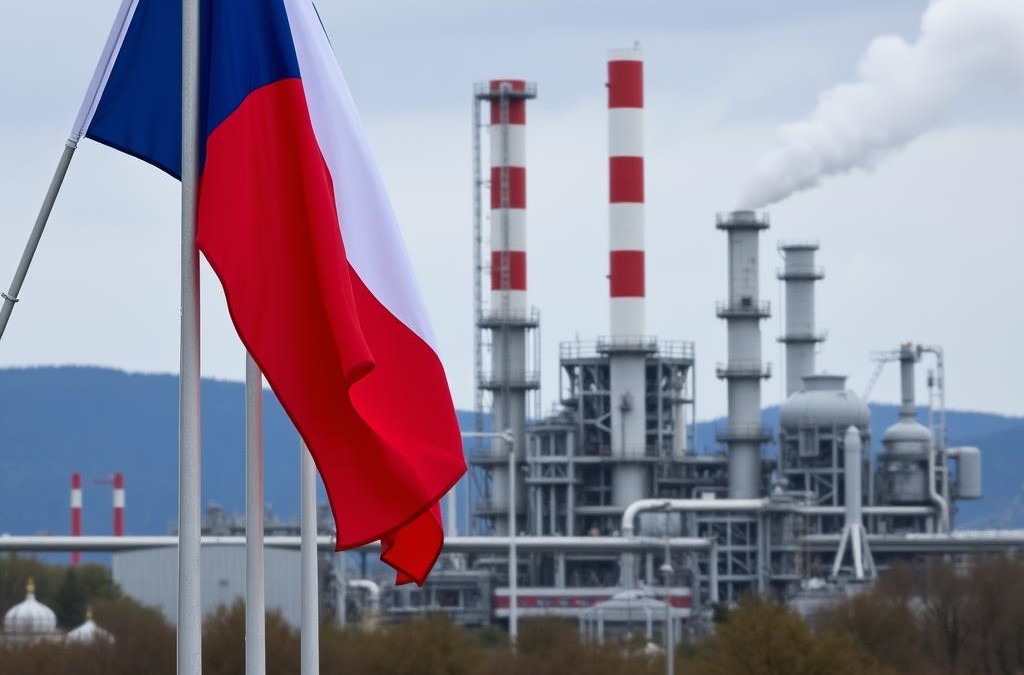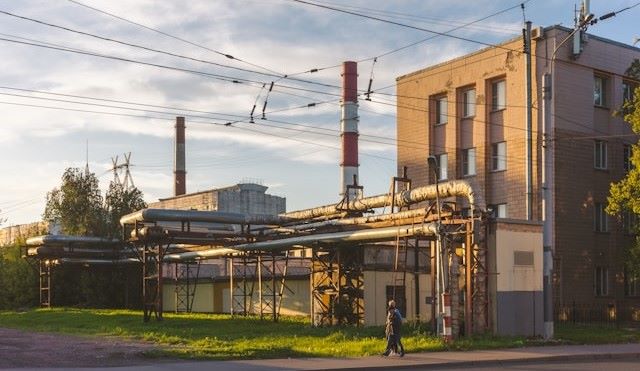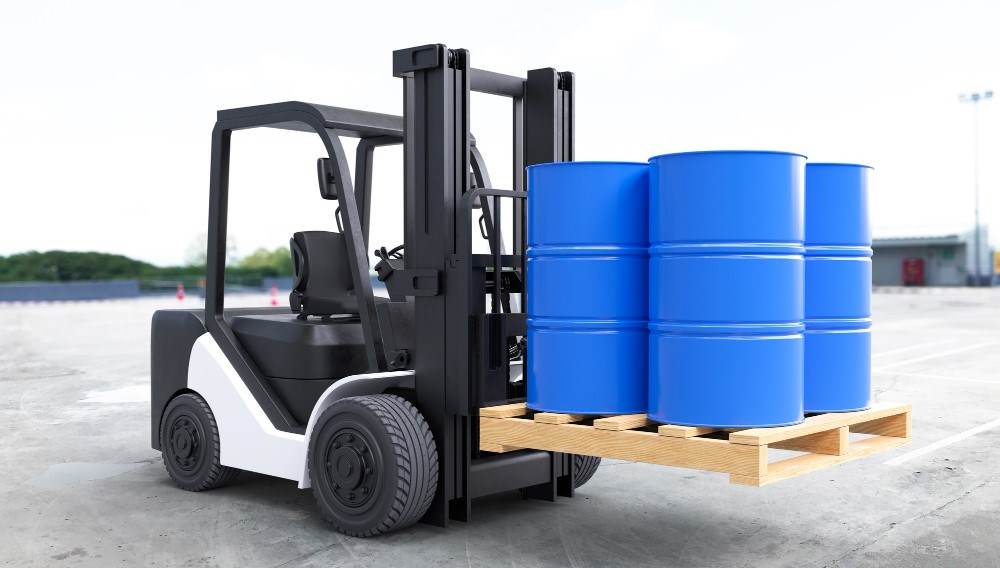-
Czech Chemical Industry Calls for Limit on Russian Imports
 Continue Reading
Continue ReadingSince sweeping sanctions were imposed on Russia following its invasion of Ukraine, Europe’s chemical industry has been caught in a life-threatening dilemma.
The once all-powerful producer of global chemical output had been heavily reliant on Russian energy and raw materials. Now that geopolitics is attempting to cut off the supply of low-cost power and chemical feedstock, the European chemical sector is now having to cope with soaring input costs, disrupted supply chains, and an urgent need to recalibrate its sourcing strategies.
While the sanctions are believed to be hurting Moscow’s revenues and limiting further aggression, they are having unintended consequences closer to home—particularly in Germany, the EU’s chemical powerhouse.
Before the war, Russian natural gas played a crucial role in fuelling Europe’s energy-intensive chemical plants, from fertiliser manufacturers to plastics producers. But with imports now drastically reduced or cut off entirely, companies are facing not only higher prices but also structural vulnerabilities that threaten their global competitiveness.
This is particularly painful as the European chemical industry is currently also trying to survive a wave of cheaper chemical imports from Asia, North America, and the Middle East, while also handling a sluggish domestic economy experiencing a steady decline in manufacturing output. At the same time, the EU’s green transition ambitions are adding further pressure, leaving the industry at a crossroads: adapt rapidly or risk long-term decline.
One example of the pain being felt can be seen in the Czech chemical industry, which (for a country of only 10 million people) employs a healthy 130,000 workers in its chemical sector. However, according to Ivan Souček, the director of the Association of the Chemical Industry of the Czech Republic, its chemical companies are going through a painful transition.
“The development plans of most of the key players in the Czech chemical industry have been revised,” he explained. “The drop in employment in the chemical industry could range from 11,000 to 32,000 people in the next few years, although the possibility of their partial use in the newly emerging ‘green industries’ can be considered.”
One Czech chemical company which is already feeling the pinch is SPOLANA, part of the ORLEN Unipetrol group and a manufacturer of PVC, caprolactam, and ammonium sulphate (for industrial fertilizer), as well as inorganic compounds and other chemical products. As recently the company had to lay off 550 workers out of almost 700 who were employed at SPOLANA’s main chemical facility just outside Prague.
Other chemical companies in Europe are also feeling the economic squeeze. In Germany, for example, SKW Piesteritz was forced to close one of its two ammonia production plants, citing, “market and political conditions.”
The unfavourable market situation is largely due to the wholesale import of Russian fertilizers which are driving down prices to an unprofitable level for European chemical producers.
As Peter Tsingr, the deputy chairman of Agrofert (fertilizers and fuel), recently stated, “… the whole of Europe, from Poland to France, is flooded with Russian fertilizers: they are imported by sea, and from ports these goods enter Europe.”
Tsingr went on to highlight that so far, central European countries had been somewhat protected from these imports due to their inland location. “Transportation costs money,” he said. “Russian exports were here even before the conflict in Ukraine, but in Germany, for example, it has grown six times, and in Central Europe — three times. About 15% of fertilizers on the Czech market come from Russia.”
Consequently, representatives of the Czech chemical industry are asking for government assistance in restricting further fertilizer imports from Russia if further European chemical plant closures are to be prevented. They cite the fact that the EU is limiting Russian natural gas imports, but is doing little to restrict its derivatives.
“Through fertilizers, the main raw material for which is natural gas, gas is actually imported further and with more added value for Russian producers,” Souček explains. “Moreover, we are economically destroying the European industry, because European manufacturers can’t seriously compete with Russian ones.”
The call to action is likely to receive a positive response from the Czech government which has long called for stricter sanctions on Russia—up to and including a complete ban on Russian goods and services entering the EU. However, as a trading bloc, the final decision on what chemical products can and cannot be imported lies with the politicians in Brussels.
Notably, the EU’s final push to remove Russian energy and chemical feedstock imports is proving a challenge. As a recent Reuters report notes, “While EU imports of Russian gas via pipelines have plummeted since the invasion of Ukraine in February 2022, around 19% of the bloc’s gas imports still comes from Russia through liquefied natural gas imports and via the TurkStream pipeline into central Europe.”
All the same, Brussels remains publicly committed to punishing Russia for its aggression, even if it economically also hurts domestic economic health. As Reuters explained, “The European Union last week released a roadmap for fully phasing out Russian oil and gas imports and the European Commission next month will propose legal measures to ban remaining Russian pipeline gas and LNG imports under existing contracts by the end of 2027. [Furthermore], the EU executive body will also propose a ban on new deals for Russian gas and existing spot contracts by the end of 2025.”
Ultimately, Europe’s chemical industry stands at a crossroads. What began as a geopolitical move to curb Russian aggression has evolved into a far-reaching economic challenge for one of the continent’s most vital industrial sectors. As chemical companies battle rising costs, foreign competition, and mounting regulatory pressures, the future of European chemical production hangs in the balance.
Without swift, coordinated action—whether in the form of targeted trade restrictions, strategic support for affected industries, or accelerated investment in sustainable feedstock alternatives—Europe risks not only losing a key economic pillar but also deepening its dependence on the very imports sanctions sought to eliminate.
As a result, the decisions made in Brussels over the coming months will not only shape the chemical industry’s trajectory but will also define Europe’s industrial resilience in an increasingly unstable world.
Photo credit: Wirestock on Freepik, Gencraft, Gencraft, Red Shuheart on Unsplash, & Mark Tryapichnikov
-
How AI Can Assist Even the Smallest Chemical Company
 Continue Reading
Continue ReadingMuch has been written about the transformative power of AI for the chemical industry. But much of the discussion has been around the efficiencies being made at large chemical facilities—the energy savings, the streamlining of processes, procurement control,d more.
But what about smaller operations and chemical suppliers? How can these chemical businesses gain from AI?
This was a topic of discussion at the recent Global Chemical Regulations Conference held in Washington DC, this April.
The key takeaways from this were:
Image Recognition:
While many AI users are familiar with interacting through text or voice, one of the lesser-known features of modern AI is its image recognition capability. This technology allows AI systems to ‘see’ and interpret visual data—an asset particularly useful for smaller chemical companies with limited staff for quality control.
For example, image recognition can be used to automatically inspect packaging for errors, such as incorrect labelling or missing hazard symbols. It can also detect defects or damage in goods upon delivery, such as cracked containers, discolouration, or leaks, which may otherwise go unnoticed until it’s too late. All of which helps towards ensuring compliance with safety and regulatory standards.
As these systems can operate continuously and consistently, they reduce the risk of human error and allow employees to focus on more strategic tasks.
Chatbots:
With fewer staff in the sales team, smaller chemical companies can make significant savings by using AI as the first point of contact for answering client enquiries, suggesting products, or even handling some orders.
But more than just speed, generative AI chatbots can streamline communication between sales teams and technical departments, reducing delays and enhancing customer responsiveness.
“One of the most compelling use cases I’ve seen for GenAI in the chemical industry is in supporting sales,” noted Brendan Boyd, former R&D executive at a Fortune 500 chemical company. “Getting the right information quickly is crucial.”
Risk Assessment:
AI can analyse safety data to predict potential hazards and recommend improvements. However, the panel noted the importance of ensuring that the AI was using the correct data set.
“Garbage in equals garbage out,” said Fitch. “We’ve heard that saying a lot, and so it’s very important that we are using optimal data when we are training models, so that we are making sure to get the most valid and reliable results.”
Regulatory Compliance:
Wading through countless pages of regulations is a laborious, time-consuming task that many smaller chemical companies lack the workforce to manage. However, it is absolutely necessary if delays and problems are to be avoided further downstream.
Sifting through heaps of text and data is an ideal task for AI, as it can quickly check if procedures and products meet safety and environmental regulations. It can also confirm that labelling is adequate and check on what paperwork is required for export.
For example, one of the Global Chemical Regulations Conference panel members, Rebecca Morones, a senior product steward at BASF, explained how she often uses Microsoft Copilot to summarize EPA risk evaluations.
However, she also cautions that while the responses were a helpful outline, AI should not be trusted to perform in-depth analysis of information.
“You still have to read the documents,” she said. “But I feel like there’s also 200 pages it’s sifting through, which does at least help get you to kind of where you’re looking for and give you a great oversight.”
Beware of Hallucinations:
The panel was also quick to highlight the dangers of AI supplying incorrect information—a phenomenon commonly referred to as hallucinations. For example, when Morone’s colleagues asked AI to determine the density of a safety data sheet or the amount of a TSCA fee, the platform returned an inaccurate response.
“Anytime it comes to regulatory aspects, you should probably have them come to the regulatory experts,” she explained. “Don’t rely on what they’re seeing or what they’re doing.”
It may also happen that AI can return references that appear authentic but actually do not exist. For this reason, the panel suggested that any material created by an AI model should be independently reviewed by personnel to confirm its legitimacy.
“With that lesson, it’s really important that not only are we reviewing the things that are coming out of any AI model, but also that we’re verifying them,” added Seneca Fitch, a Director at the chemical business consultancy ToxStrategies. “Because something could certainly sound logical, it could certainly look real, and yet it’s not. It’s false information and that hallucination, that’s not rare.”
“So, if your businesses are using this,” cautioned Morones, “just make sure that they are aware of these hallucinations.”
One further way to confirm an AI response’s accuracy, was to ask the question many times, or even on different AI tools.
“If the question or the task might be repeated over and over again, you want to ensure that you’re getting similar performance for each iteration of the task,” noted the IS EPA’s Sean Watford.
Prompt Training:
The final point raised by the team was not so much an advantage to be gained, but advice on how to get the most out of AI. This is because, like any new tool, staff will benefit from proper training to gain the full benefit of what can be achieved.
“I think that the most practical advice is that it (AI) is a computer, and it uses logic,” said Fitch who recommended users adopt a computer-like way of thinking when prompting AI.
This was a view supported by Morones, who suggested keeping instructions simple. For example, she suggested imagining instructing a computer in how to make a sandwich. “It’s not going to understand, ‘Grab two slices of bread,’” explained Morones. “You have to be very specific for what you’re doing.”
While AI is often associated with large-scale industrial transformation, it’s clear that smaller chemical businesses have just as much to gain—if not more—from adopting these technologies. From streamlining customer interactions with chatbots to leveraging AI for compliance, safety checks, and even basic administrative tasks, the opportunities are both practical and powerful.
However, with great power comes great responsibility: proper training, data quality, and human oversight remain essential.
For small chemical operations looking to stay competitive, AI isn’t just a futuristic concept—it’s an accessible tool that, when used wisely, can deliver immediate and meaningful benefits.
Photo credit: Freepik, Pxhere, Superdupr, Frimufilms, Rawpixel, & User7602303









